Published Sep 1, 2023
Star Trek's First Cliffhanger
Let's revisit what made 'The Best of Both Worlds' stand out when it first aired.
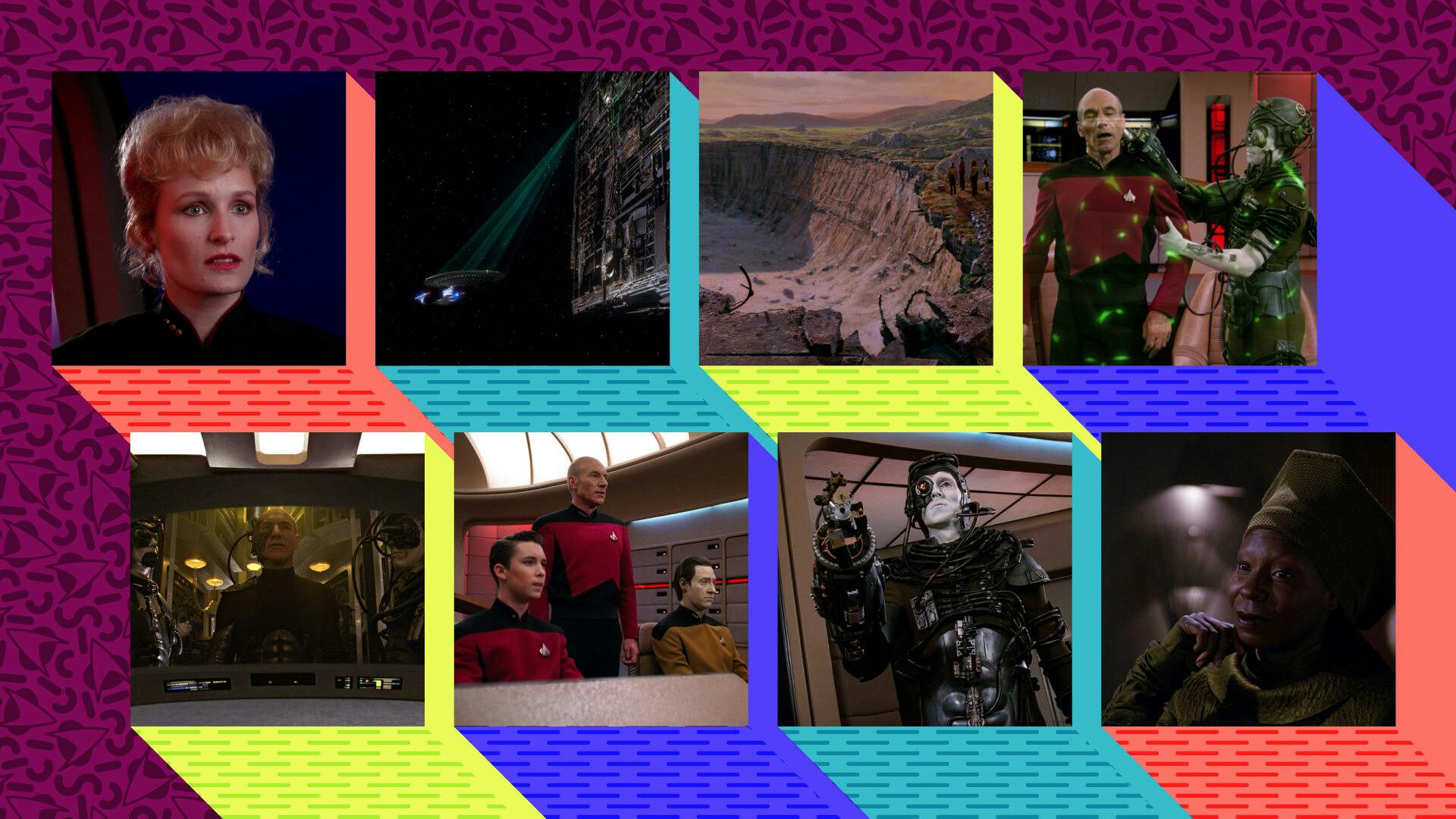
StarTrek.com
We're going to go back in time. We Star Trek fans can do that, you know.
Nearly 30 summers ago, I was on my grandparents’ farm. As was tradition, I would slink away for an hour and watch the TV in the kitchen. I can still smell the linoleum and hear the rattle of the ancient refrigerator. It was here that I saw the killing of Tasha Yar, the defense of Data as a sentient being and, with "," true evidence that "this new Star Trek" — — was committed to a space opera on its own terms.
Here are the five things about it that still most resonate.
The Tone
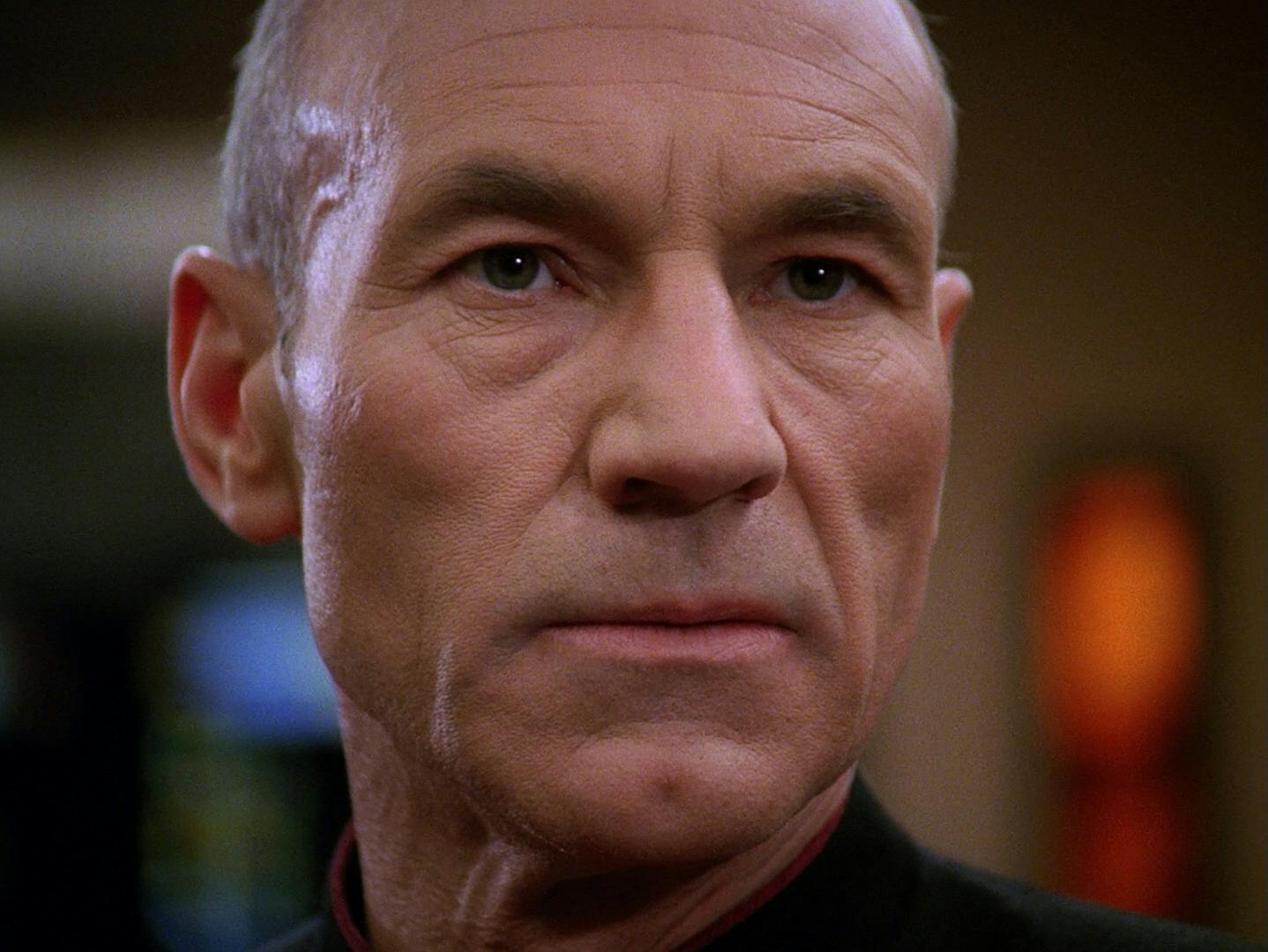
"The Best of Both Worlds, Part I"
StarTrek.com
"The Best of Both Worlds, Part I" means business from the first line to the last. Listen to the way Picard rushes through his opening log entry. His inflection is harsh, grave, and precise. He's got important things to do.
It's a cue from the very beginning that the rules of this show — of this franchise — are about to change. It is a palpable attitude that is noticeable on through the last line of this episode, Riker's now-famous command to Worf to fire upon the Borg Cube, the one with his assimilated captain on board. There's a striking sense of fatalism here.
By today's standard of dark television, it's nothing, but back then, Picard's pre-battle walk of the ship (and subsequent conversation with Guinan) wasn't the type of thing you'd normally see. Guinan comforts him by saying mankind will adapt to the Borg, but does not tell him that he should expect to win the day.
The Borg
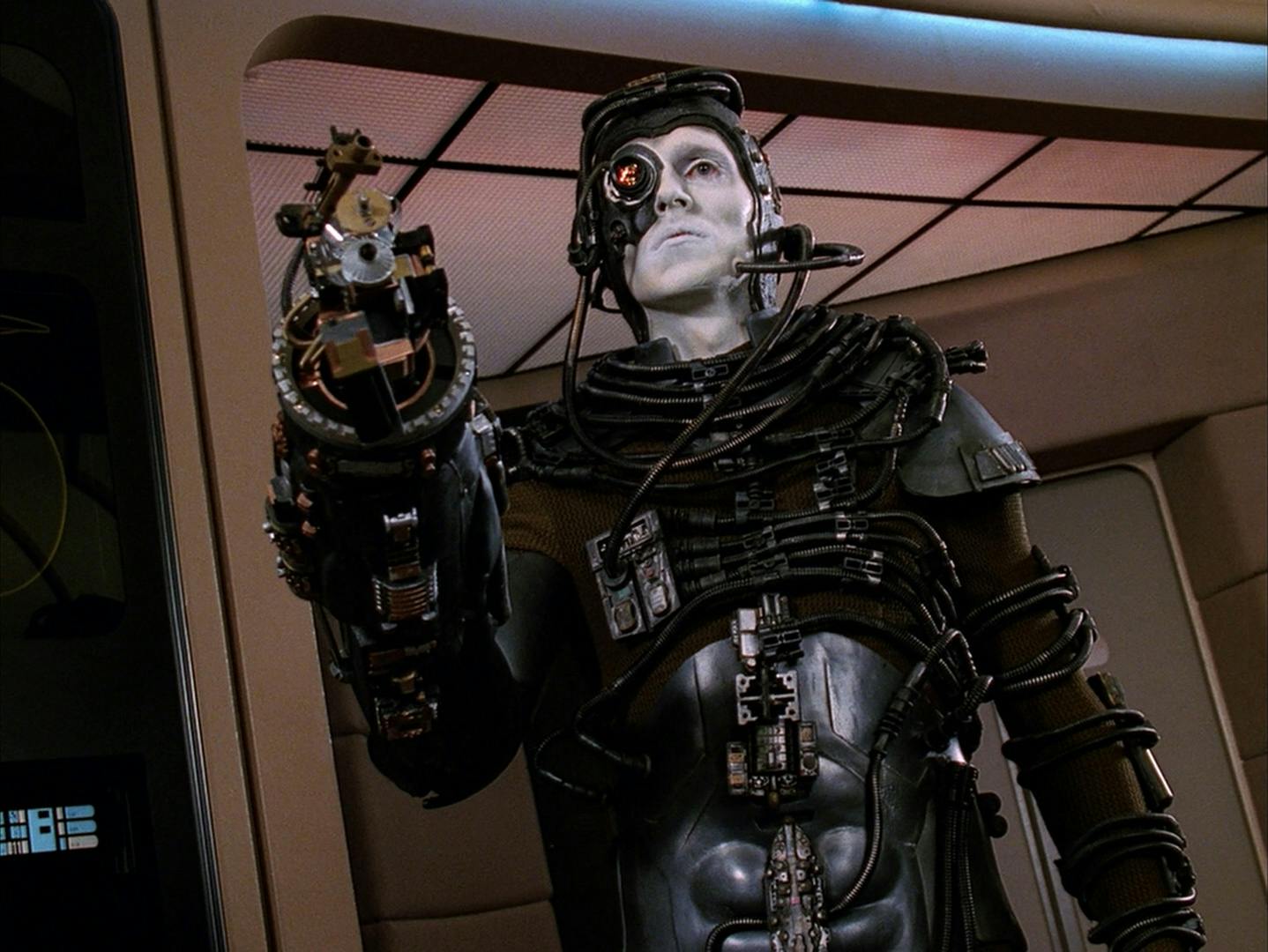
"The Best of Both Worlds, Part I"
StarTrek.com
Of course, this was not the episode that introduced the Borg; that was "," a full season earlier. Fans were left wondering if we'd ever see this unique species again — a villain more unique than any we'd seen before. With "The Best of Both Worlds, Part I," we really get a chance to dig in.
(Tangent: I recall an in-depth lunchroom discussion about Q's introduction of the Borg. At the end of “Q Who?,” Picard seemed grateful that he enabled the Federation to prepare for their invasion. But did the events of “Q Who?” merely put the Borg on the Federation's scent?)
They have the power to wipe us out with nothing more than a glance, yet with this asymmetrical level of power, there's almost a sense of disrespect on their behalf. We rank so low as a threat that they'll allow us to beam aboard and look around, with individual drones completely ignoring us.
In this episode, we get a better look at how they are quick to adapt to our attacks (those phaser shields that appear around drones after one or two shots still gives me goosebumps) and how the "hive mind" works. It's in this episode that we first learn that "death is irrelevant," and that "resistance is futile."
Starfleet as a Job
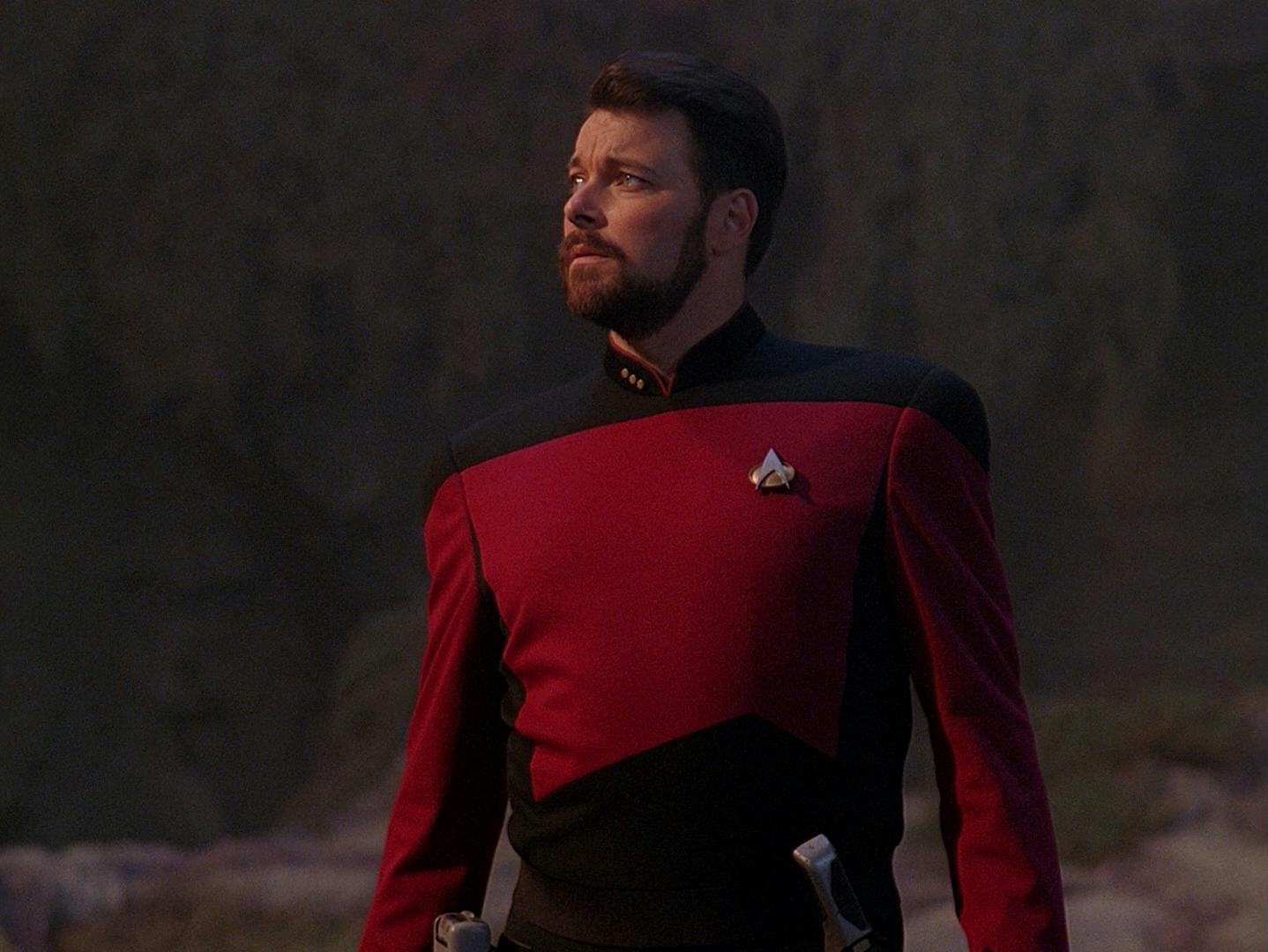
"The Best of Both Worlds, Part I"
StarTrek.com
In all of Trek up to this point, Starfleet and the Federation are presented as Utopia. Yes, there are some annoying Admirals and regulations ("The Galileo Seven" and "Court Martial" come to mind), but the individual characters seem, by and large, to have evolved from the mundane particulars that rankle us in everyday life. They devote themselves to Science! to Exploration! to Truth!
"The Best of Both Worlds, Part I" dims the brightness of this rose by showing that, in actuality, our beloved characters worry a bit about their jobs, too. I'm referring primarily, of course, to Riker's indecision regarding taking the captain's seat on the Melbourne, and Lt. Commander Shelby's jockeying for Riker's position as the Enterprise's Number One. Shelby is, however, a Starfleet officer, so while her demeanor may ruffle Riker's feathers, he confides to La Forge that her expertise with the Borg more than makes up for the nuisance of dealing with her during this crisis.
But that's not the only interesting thing Riker says. His conversations with Picard and, later, with Troi reveal a side of Federation society we don't often see. In a society where everything seems so perfect – where everyone produces according to his ability and takes according to his need, there are still human, self-imposed psychological restrictions. Maybe Riker SHOULD command the Melbourne – but his devotion to Picard (or innate fears) are what's preventing him. This type of hurdle is something we haven't yet seen in Star Trek.
An Unfamiliar Tune
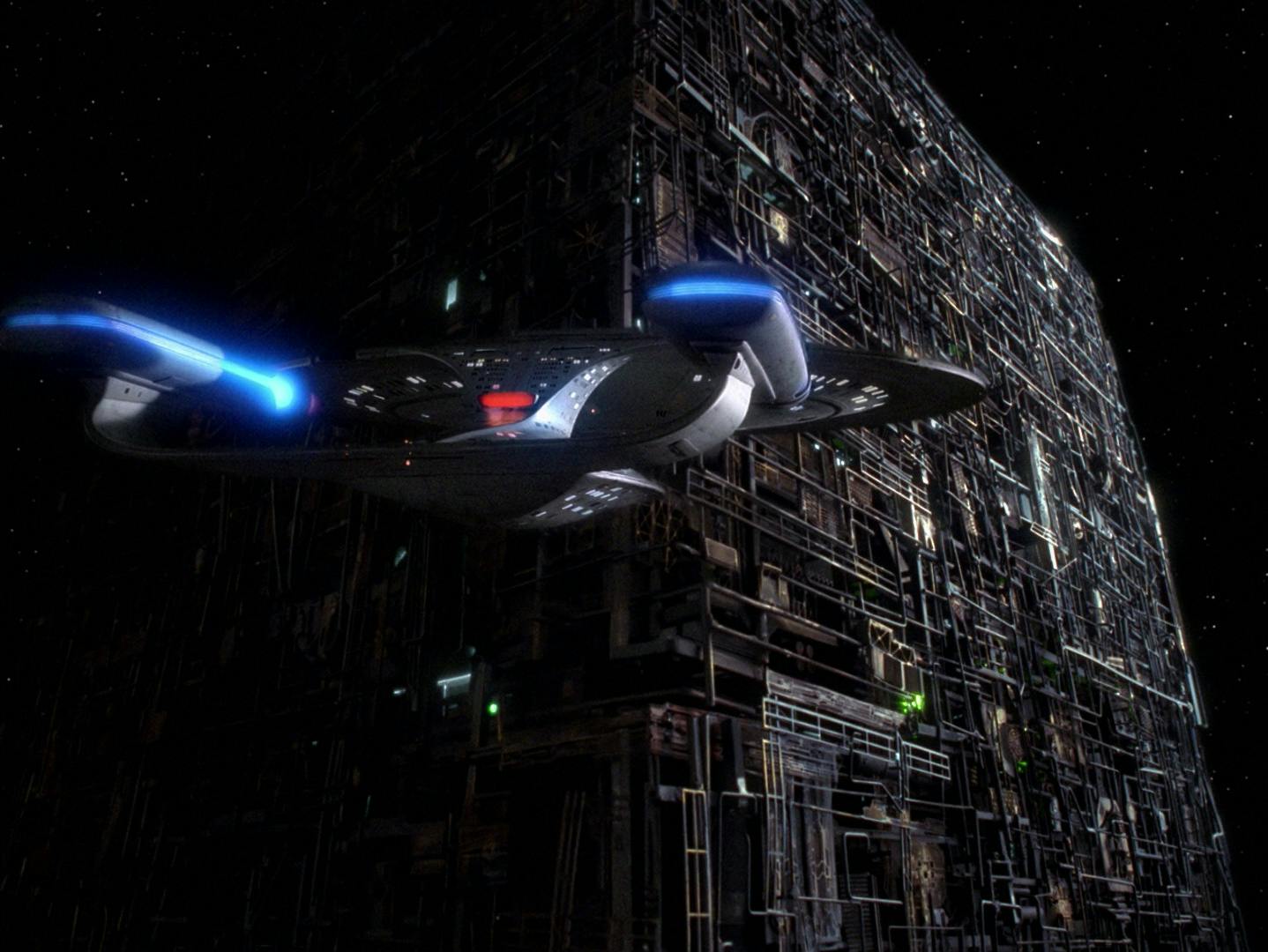
"The Best of Both Worlds, Part I"
StarTrek.com
“The Best of Both Worlds, Part I” doesn't just look and feel different; it sounds different.
When we first see the Borg Cube, the score takes on a frightening tone, incorporating a chorus of voices. The use of voices (which are synthesized – even creepier considering the Borg) was something the producers were hesitant to do, but composer Ron Jones persisted. He wanted to get across that this ship represented the possible end of all mankind, and it had to stand out.
Later, when the away team first sees Picard as a Borg drone later to be named Locutus, there's a wee tease of Alexander Courage's original theme from The Original Series.
The big guns come, of course, at the end. “Mr. Worf,” Riker intones. “Fire.”
He may be steely-eyed and cool, but inside he's flipping out and that is expressed through the score. In case you forget, it is a swell of strings that leads to BUM-BA-BUM! BUM-BA-BUM! BUM-BA-BUM! BUM-BA-BUM! BUMMMMMMMMMM!” But you may not have heard that because you may have been shouting OH MY GODDDDDDDD!
Which leads to...
Wait Til Next Season, Pal
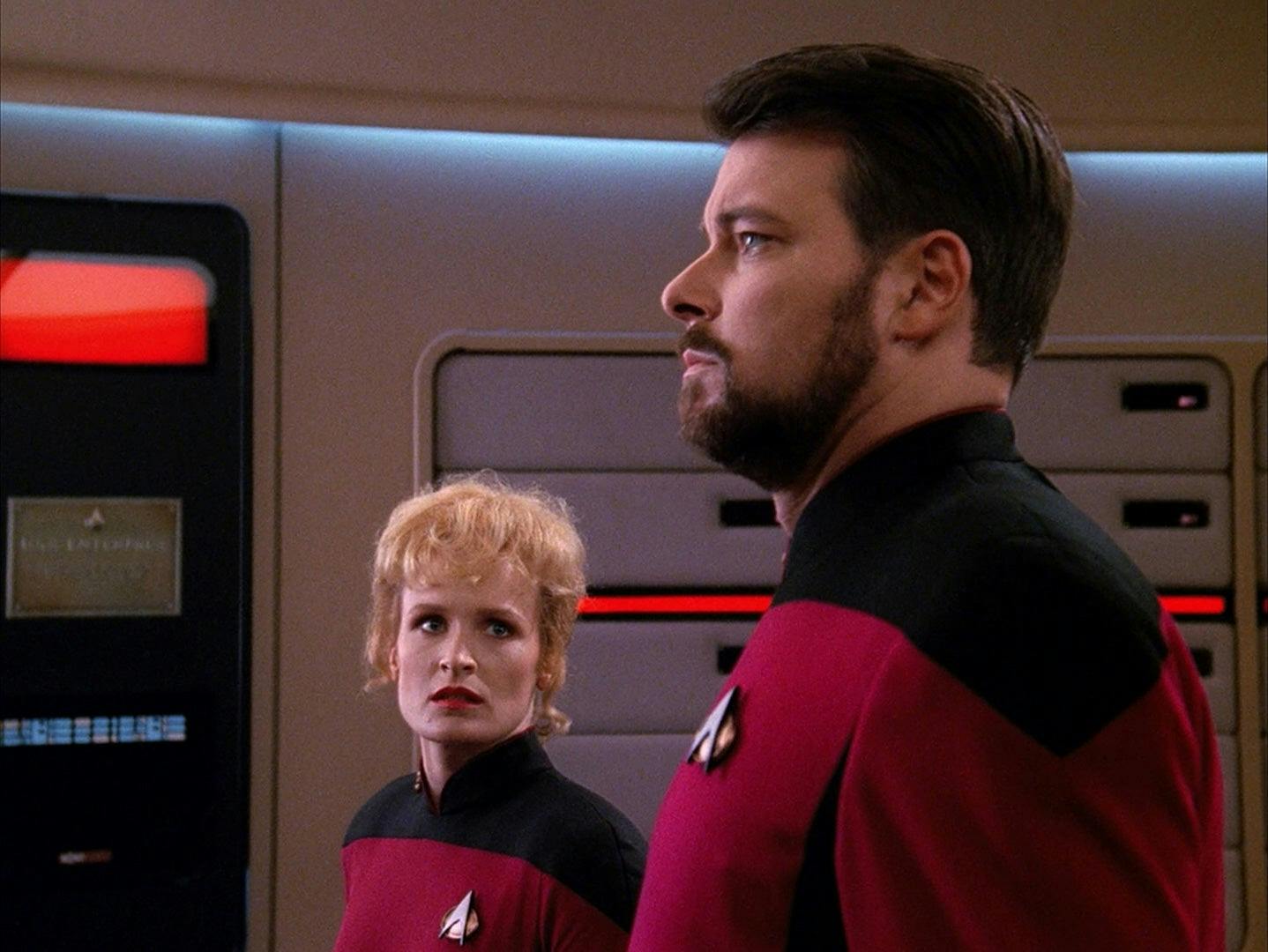
"The Best of Both Worlds, Part I"
StarTrek.com
Star Trek had done two-parters before (“” and second airings of “”), but a season cliffhanger? No way. That was the territory of major, mainstream shows. “Who shot J.R.?” and the like. (If you're a young-un, Google that one.)
“The Best of Both Worlds, Part I” ensured that The Next Generation, which had so many initial detractors, was sticking around and playing for keeps. You must remember that its syndicated nature was such that it played on different networks at different times in different locations. The kids today with their Hulus and tablets and whatnot may think I'm speaking gibberish, but back then, it was a real stigma that some felt marked the show as ephemeral. “The Best of Both Worlds, Part I” united the dialogue about TNG for months. Did Riker blow up Picard?
Immediately, there were rumors that Patrick Stewart, the noted theater actor, wanted out of the show. People also were quick to point out that Tasha Yar was killed, and she was a major character. Plus, it looked like Shelby was around for keeps. And could the Enterprise even defeat the Borg? Bluntly, we just didn't know what to expect and the wait drove us crazy. And gave us a summer to argue about it.
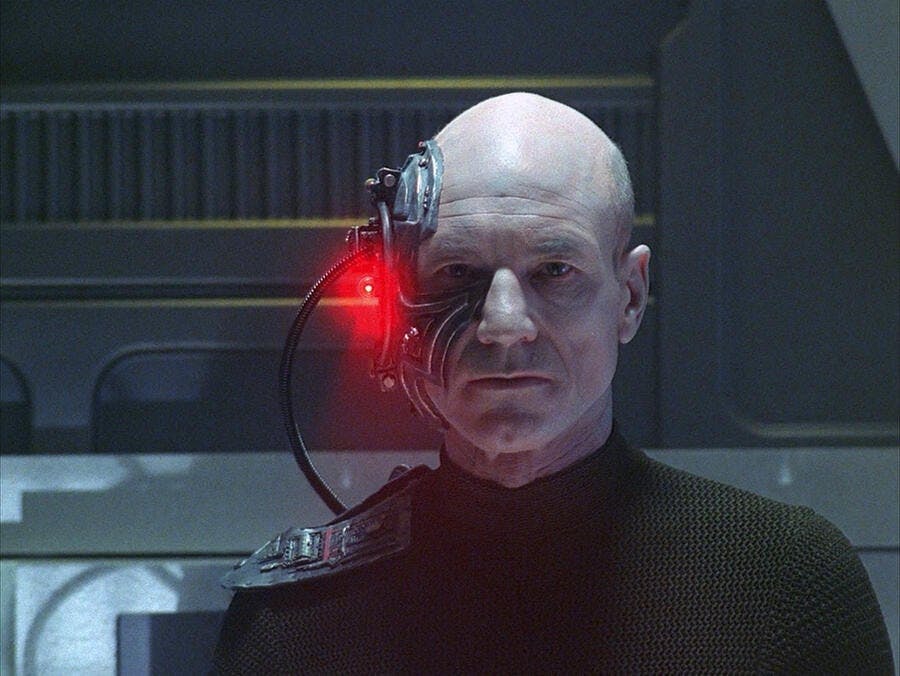
"The Best of Both Worlds, Part I"
StarTrek.com
Were you watching back in 1990? Did you spend that summer tied up in knots worrying about the fate of Jean-Luc Picard? If so, please share you recollections with @StarTrek on social.





